Tunnel Effect in Quantum Science Alexander Gabovich, KPI,

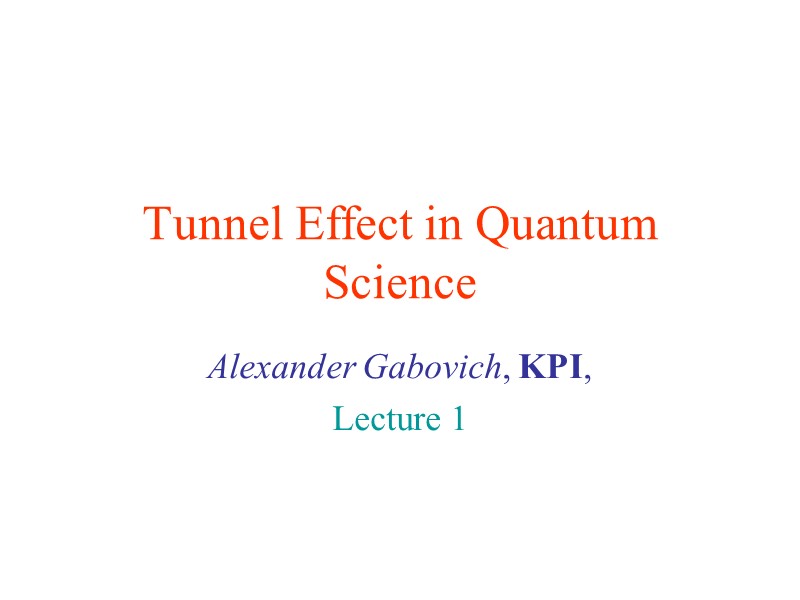
Tunnel Effect in Quantum Science Alexander Gabovich, KPI, Lecture 1
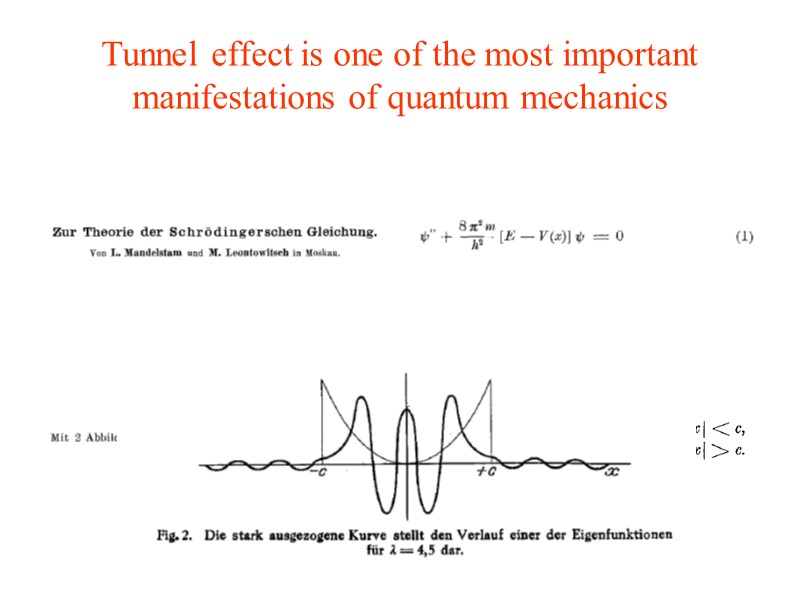
Tunnel effect is one of the most important manifestations of quantum mechanics
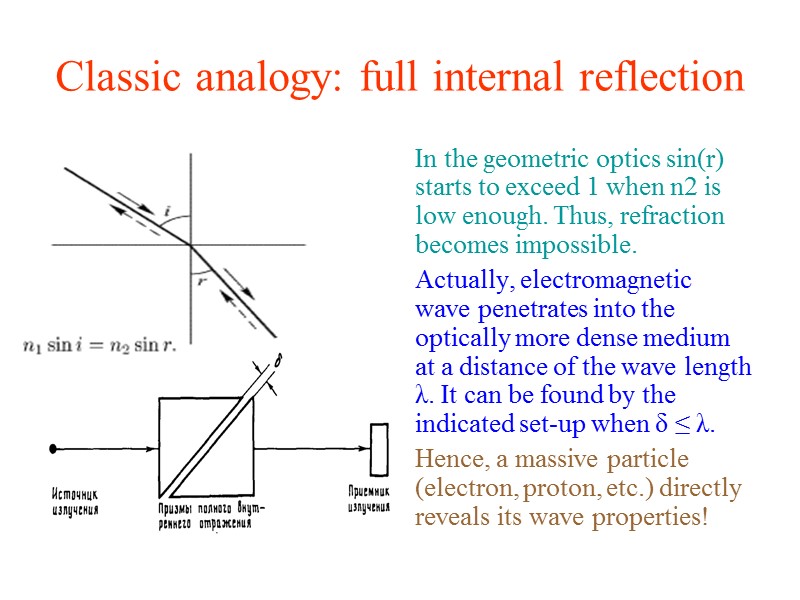
Classic analogy: full internal reflection In the geometric optics sin(r) starts to exceed 1 when n2 is low enough. Thus, refraction becomes impossible. Actually, electromagnetic wave penetrates into the optically more dense medium at a distance of the wave length λ. It can be found by the indicated set-up when δ ≤ λ. Hence, a massive particle (electron, proton, etc.) directly reveals its wave properties!
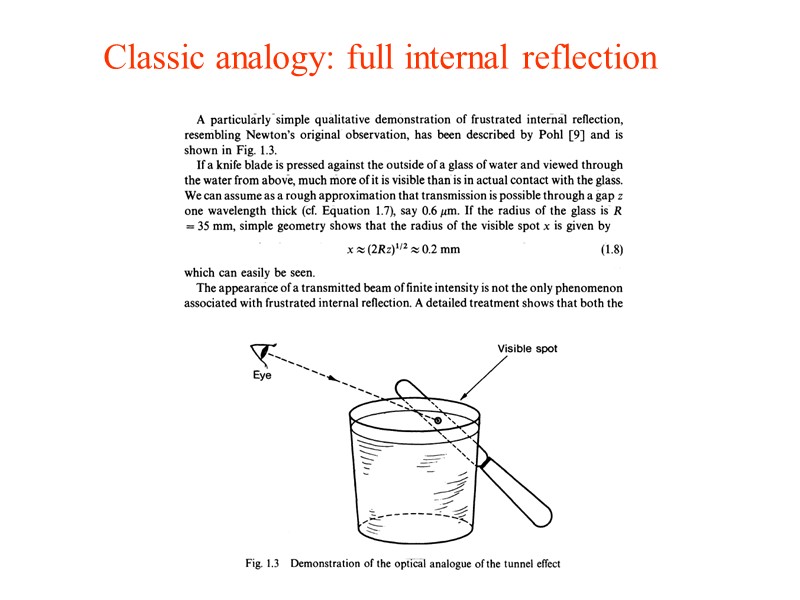
Classic analogy: full internal reflection
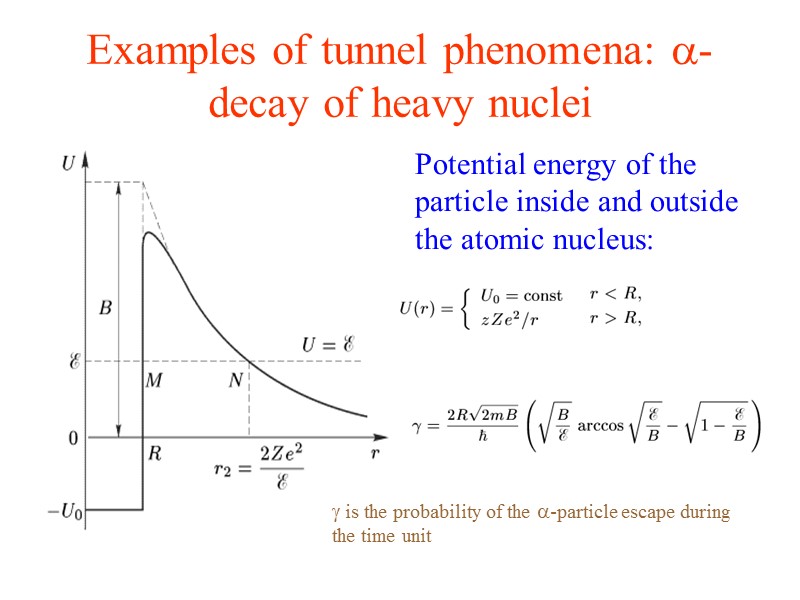
Examples of tunnel phenomena: -decay of heavy nuclei Potential energy of the particle inside and outside the atomic nucleus: is the probability of the -particle escape during the time unit
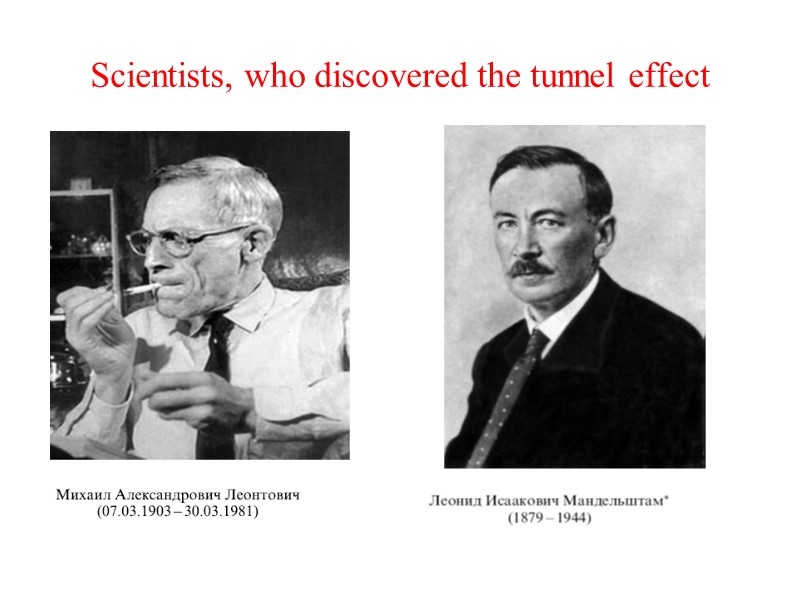
Scientists, who discovered the tunnel effect
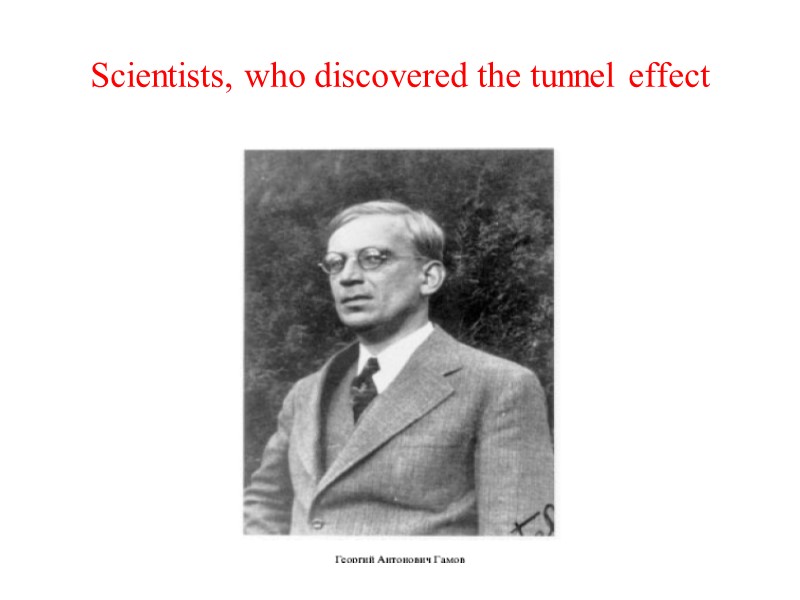
Scientists, who discovered the tunnel effect
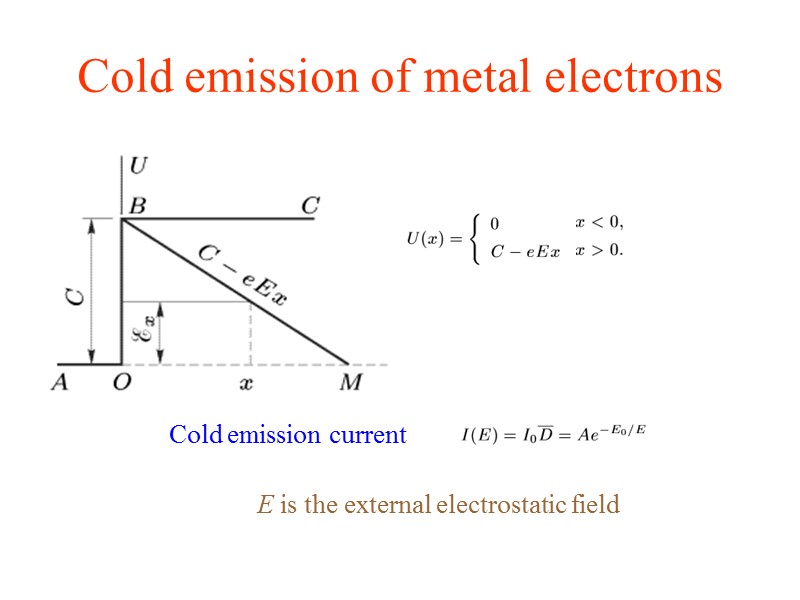
Cold emission of metal electrons Cold emission current E is the external electrostatic field
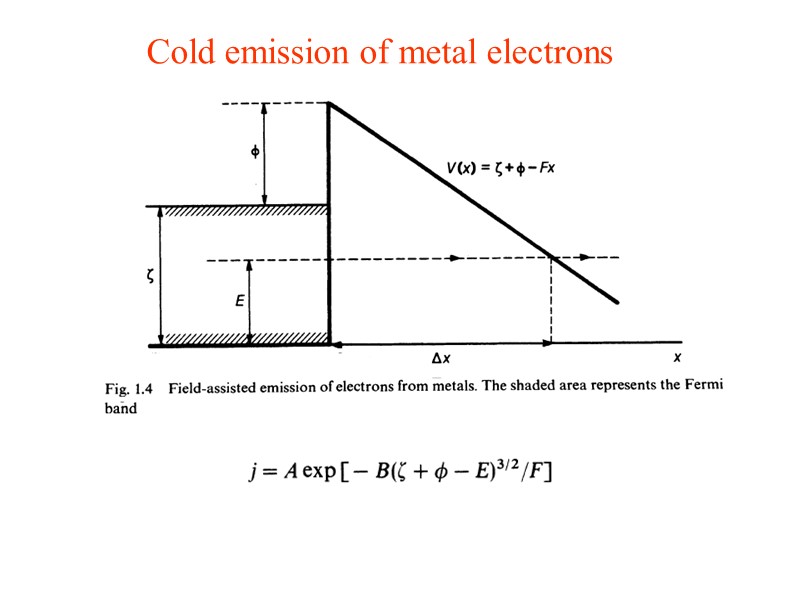
Cold emission of metal electrons
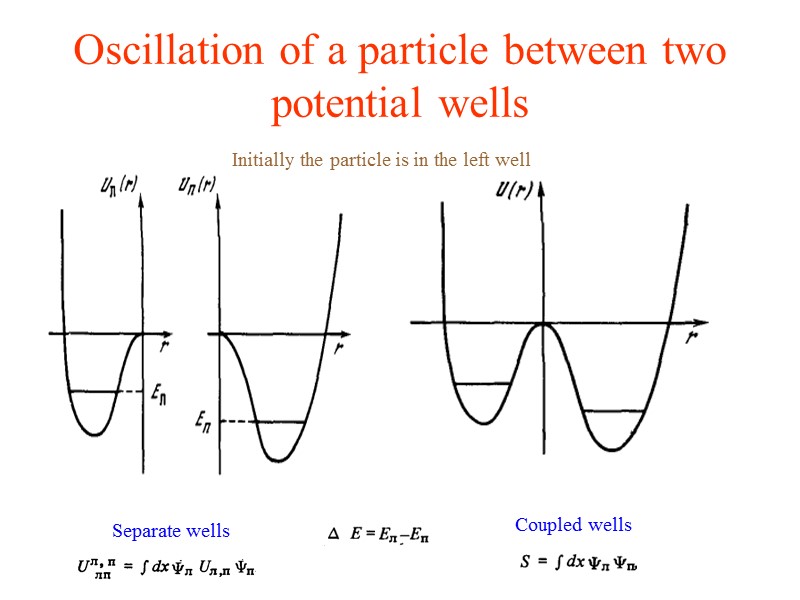
Oscillation of a particle between two potential wells Separate wells Coupled wells Initially the particle is in the left well
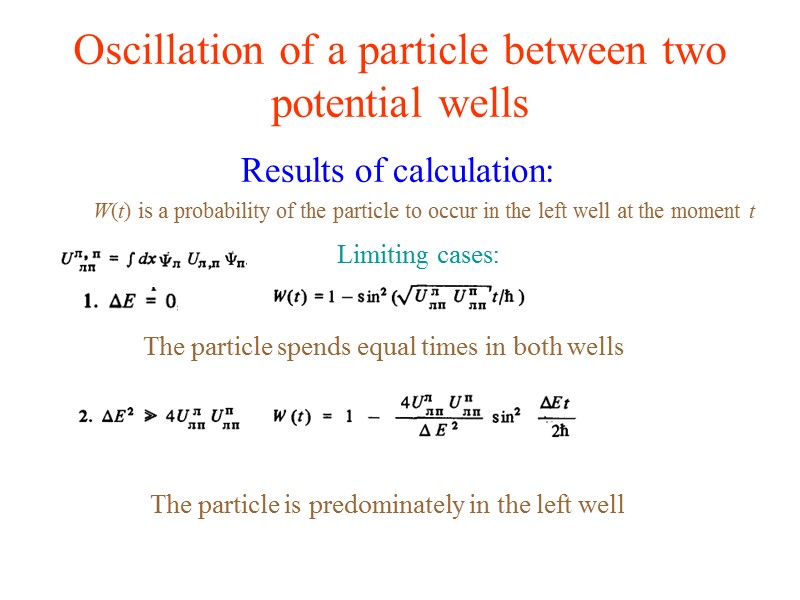
Oscillation of a particle between two potential wells Results of calculation: W(t) is a probability of the particle to occur in the left well at the moment t Limiting cases: The particle spends equal times in both wells The particle is predominately in the left well
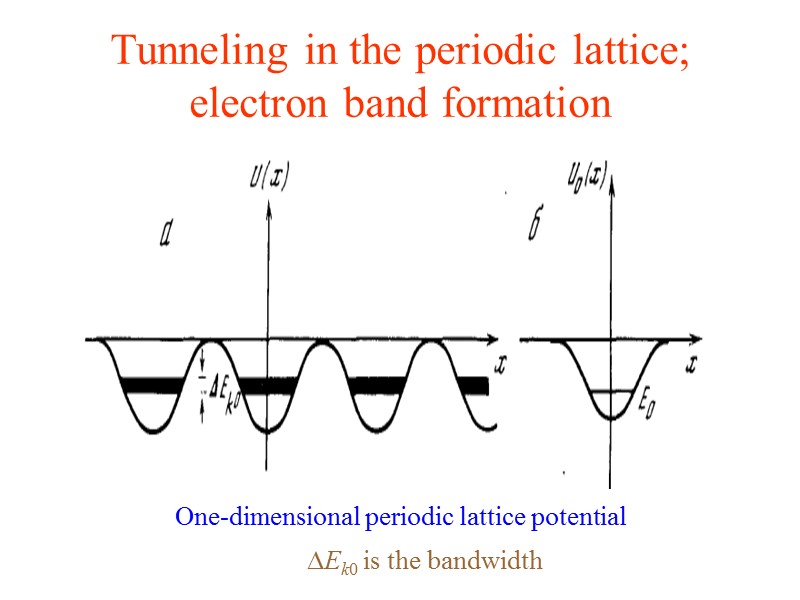
Tunneling in the periodic lattice; electron band formation One-dimensional periodic lattice potential Ek0 is the bandwidth
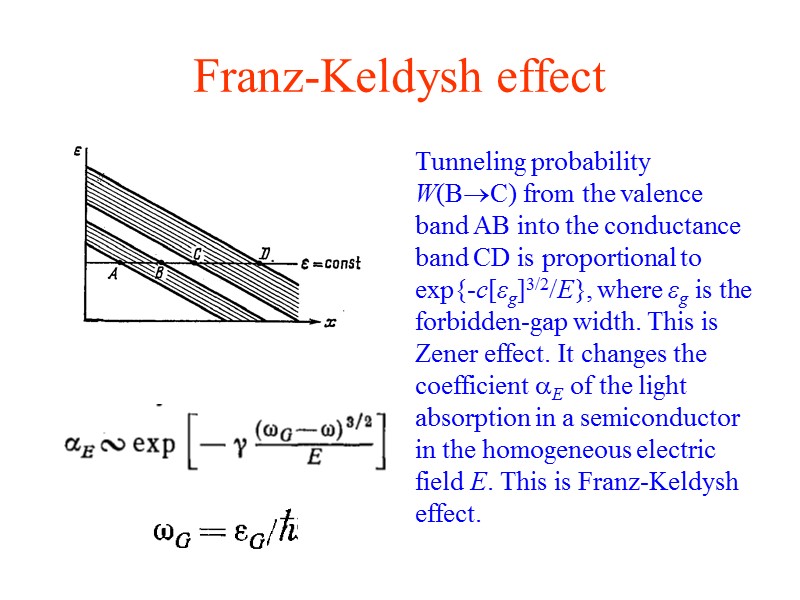
Franz-Keldysh effect Tunneling probability W(BC) from the valence band AB into the conductance band CD is proportional to exp{-c[εg]3/2/E}, where εg is the forbidden-gap width. This is Zener effect. It changes the coefficient E of the light absorption in a semiconductor in the homogeneous electric field E. This is Franz-Keldysh effect.
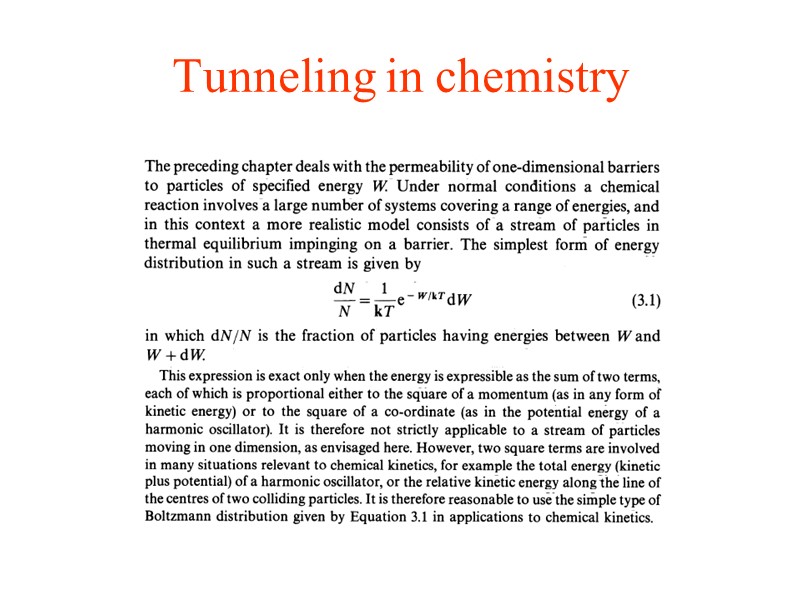
Tunneling in chemistry
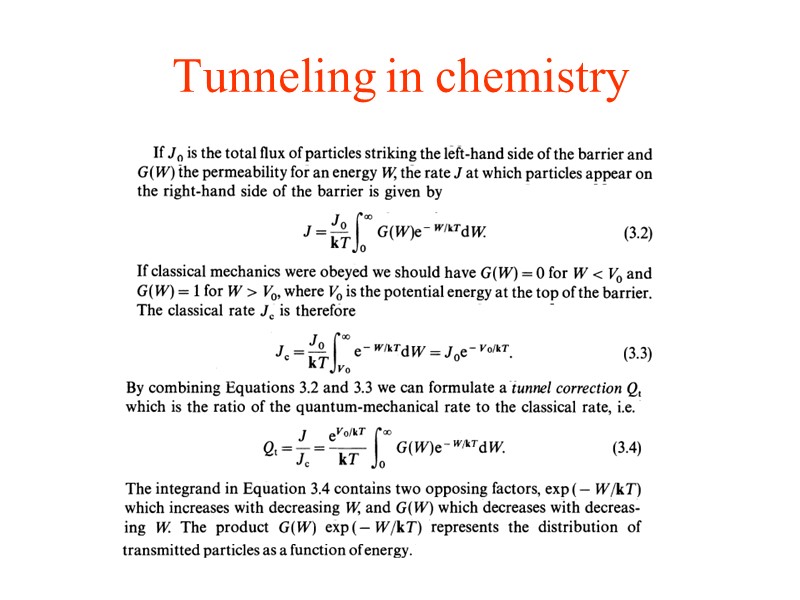
Tunneling in chemistry
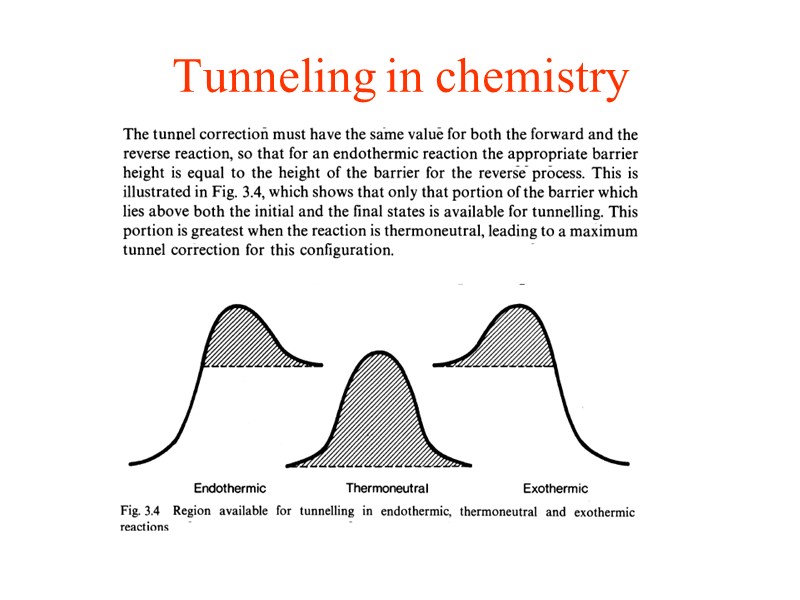
Tunneling in chemistry
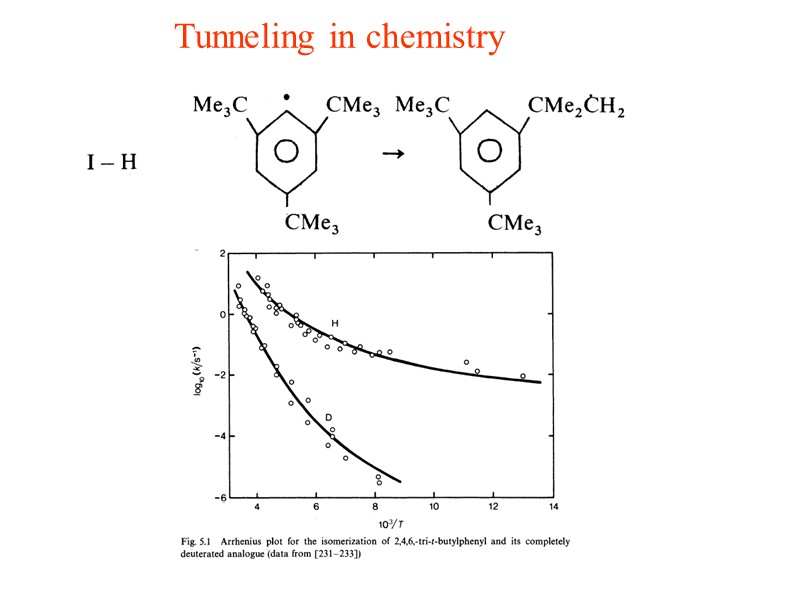
Tunneling in chemistry
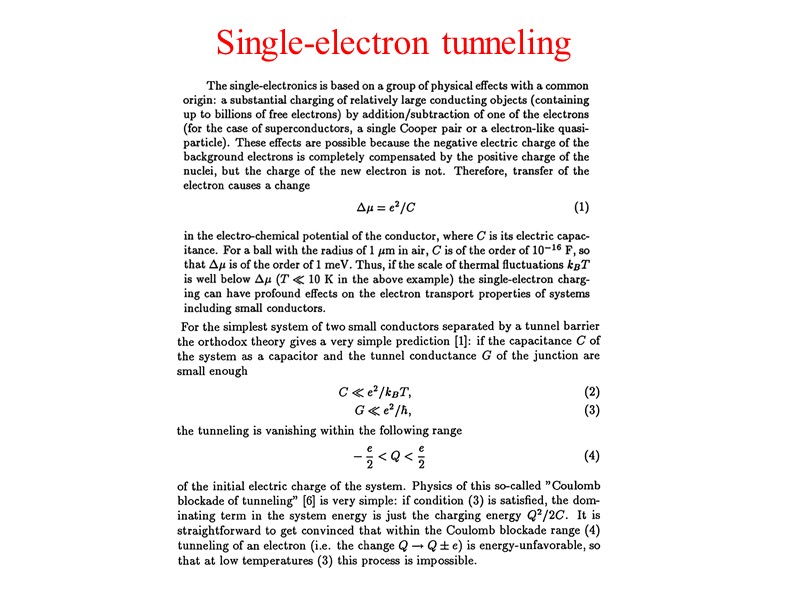
Single-electron tunneling
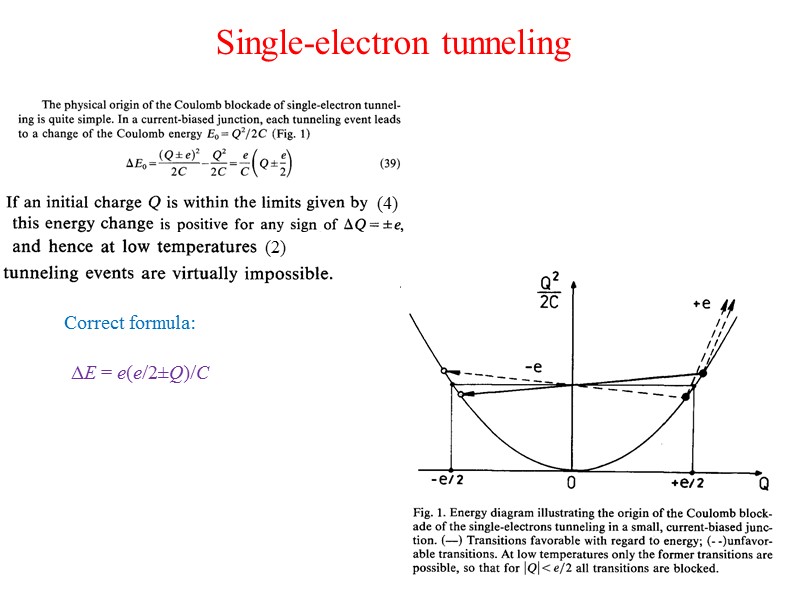
Single-electron tunneling (4) (2) ΔE = e(e/2±Q)/C Correct formula:
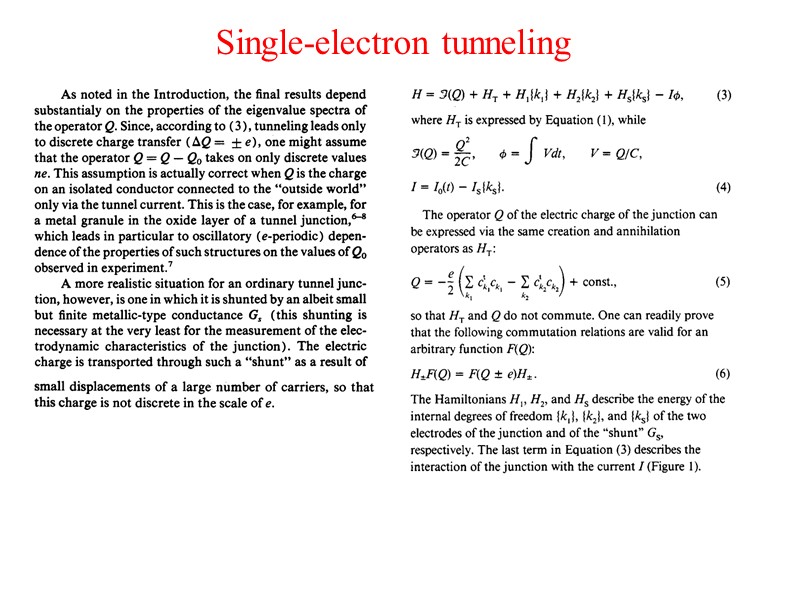
Single-electron tunneling
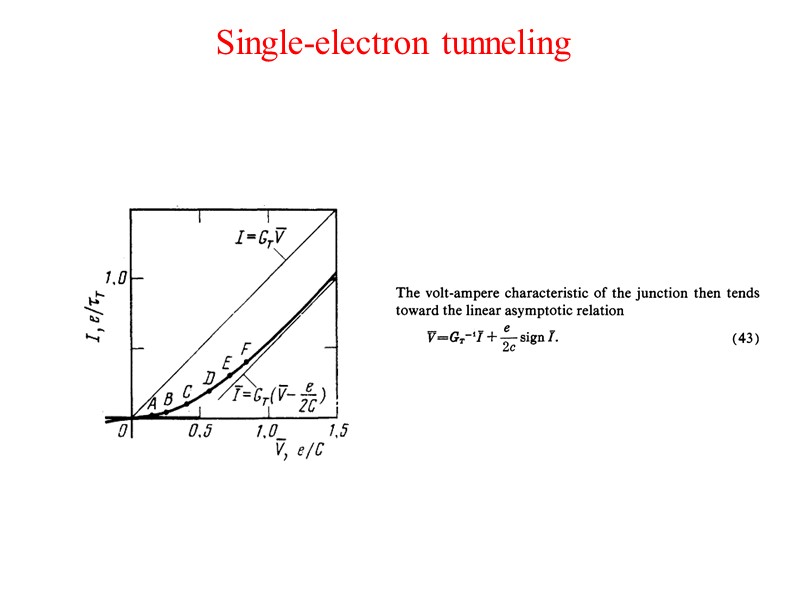
Single-electron tunneling
31468-lect1tunnel_effect_in_quantum_science.ppt
- Количество слайдов: 21

